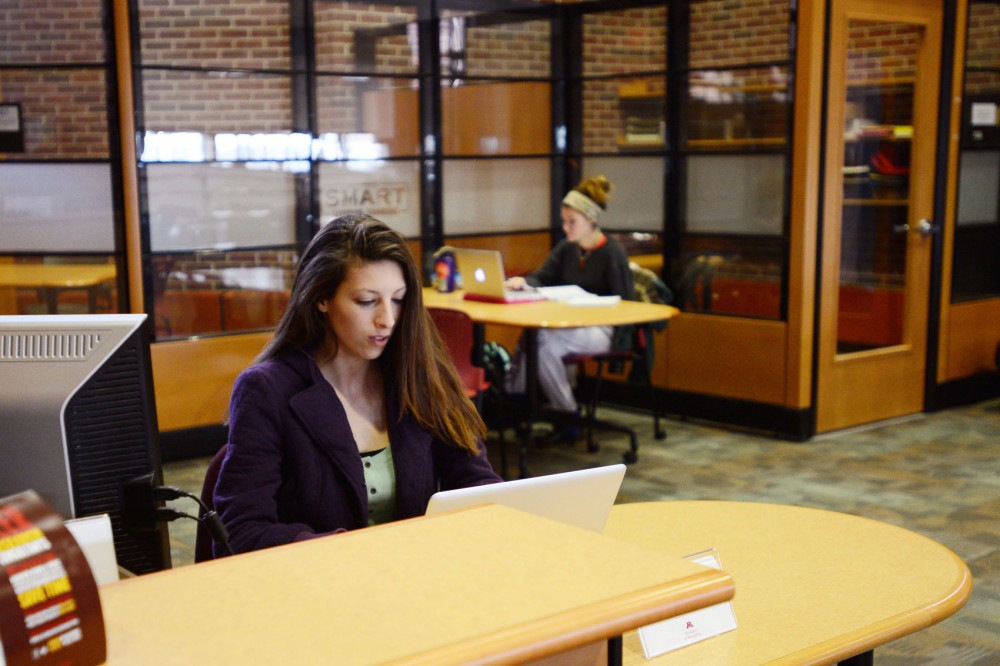University of Minnesota sophomore Tia Theisen spends most of her time working on her own homework when she tutors in Magrath Library on Wednesdays.
Students occasionally approach her with a question about writing or Spanish, but she said she usually won’t see more than five students during her four-hour shift in the SMART Learning Commons on the St. Paul campus.
“It’s usually pretty slow,” said Theisen, as she sat at her desk in the mostly empty commons.
The University’s SMART Learning Commons is a peer-tutoring program available at Walter Library on the East Bank, Wilson Library on the West Bank and Magrath Library on the St. Paul campus. Although the program draws a lot of traffic from students on the East Bank, its less-popular locations have very little demand on a weekly basis.
Matt Walters, coordinator for the SMART Learning Commons, said about 10 times as many students seek tutors on the East Bank as compared to other locations.
Having a much smaller workforce than previous years has also made it difficult to supply tutors at less popular locations, he said.
“I’ve had to put everyone I can possibly put in Walter Library.”
Max Wolf, a biomedical engineering freshman, said he visits the tutors in Walter Library because the location is convenient for him.
But he said he doesn’t like working with tutors who are helping multiple students at once — a common trend at Walter.
“I like to come here and approach a tutor … and get instant feedback,” Wolf said. “It would be a lot nicer if there were more tutors available for me to do that.”
Walters said though about five times as many tutors are scheduled at Walter Library, tutors still often end up juggling questions from multiple students at a time. He said he hopes to increase the workforce at Walter in the future.
“To scale up services at Walter while keeping our budget relatively constant is a challenge every semester.”
He also wants to increase the number of tutors at Magrath Library, but it’s challenging to measure the amount of additional help that may be needed, he said.
“It’s kind of a difficult location,” Walters said. “Every time we increase the number of tutors there, we don’t see a huge response and demand.”
He said he’s looking into ways to provide a wider variety of subjects at the Magrath learning commons and hopes having help in more areas of study will encourage more students to utilize the service in St. Paul.
Wildlife biology junior Shana Olson said she prefers the East Bank location to St. Paul because of the greater variety of tutors.
The lower demand for tutors at Magrath might be because of the different academic standards of students at the University, said senior Jessica Giese, who works as a tutor in the Magrath SMART Learning Commons and used to tutor at a community college.
“It’s a pretty intense school,” Giese said. “People have study skills … so they don’t necessarily need to come to a professional or a semi-professional to get that.”
Walters said though the need for tutors at different locations is unpredictable semester to semester, the SMART Learning Commons is working to match students’ demands.
“It’s a thought-intensive process,” Walters said, “but we try to meet people’s needs.”








